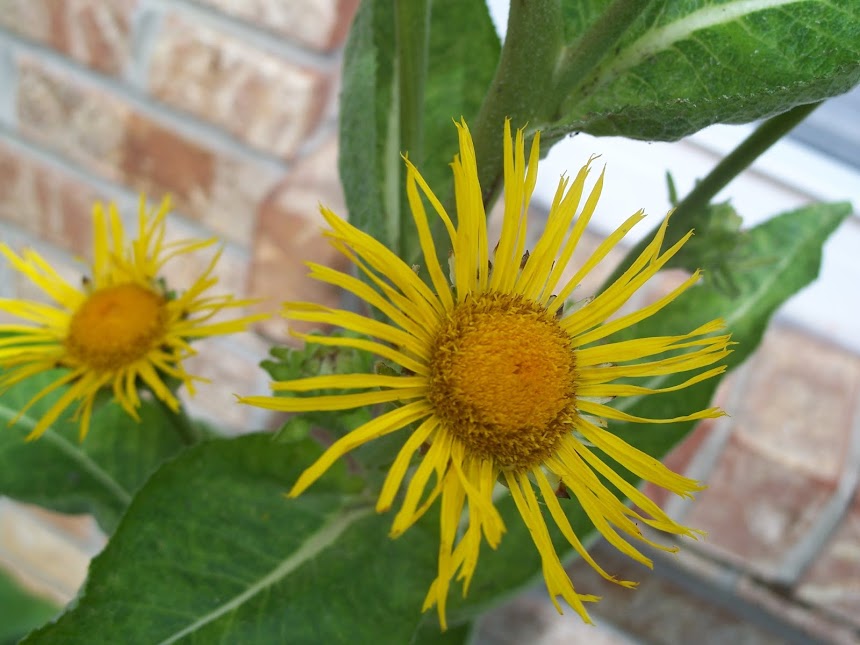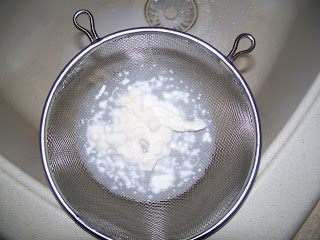So, some of us drink kefir in this house, and some of us don't. The people that drink the Kefir have not been keeping up with the drinking part of the equation lately. By lately, I mean it has been probably 2 months since we have had any. The quart jar has been sitting lonely and sad in the fridge waiting to be useful to someone.
I pulled it out today to refresh it and start drinking it daily once again. It looked fine and the little kefir granules were in good shape. I thought I would post some pictures so you could see what I did and how everything looked. The quart jar is sitting on the counter right now and will be ready (I hope) by tomorrow. However, depending on the temperature of the room etc. it can take a little longer to work.

After draining the old kefir, I used spring water to rinse the grains in the metal strainer. We have a city water system here with Chlorine and Flouride in it so we don't use it for cooking, drinking, or any of our recipes. The Chlorine/Flouride can kill your kefir grains so be careful not to use anything but clean, clear water when rinsing them.

Once the grains were rinsed, I pulled a fresh quart jar of goat milk out of the refrigerator, added the grains, shook the jar slightly and placed it on the back of my counter to start fermenting.
Kefir grains look like little pieces of cauliflower. Here is a close up of these friendly little bacteria.
Don't throw out the kefir you haven't been drinking, just re-fresh it and you can start all over.
I pulled it out today to refresh it and start drinking it daily once again. It looked fine and the little kefir granules were in good shape. I thought I would post some pictures so you could see what I did and how everything looked. The quart jar is sitting on the counter right now and will be ready (I hope) by tomorrow. However, depending on the temperature of the room etc. it can take a little longer to work.
This is the jar of old kefir from the fridge.
I used a metal strainer to drain the old kefir through and to catch the kefir grains

After draining the old kefir, I used spring water to rinse the grains in the metal strainer. We have a city water system here with Chlorine and Flouride in it so we don't use it for cooking, drinking, or any of our recipes. The Chlorine/Flouride can kill your kefir grains so be careful not to use anything but clean, clear water when rinsing them.

Once the grains were rinsed, I pulled a fresh quart jar of goat milk out of the refrigerator, added the grains, shook the jar slightly and placed it on the back of my counter to start fermenting.
Kefir grains look like little pieces of cauliflower. Here is a close up of these friendly little bacteria.
Don't throw out the kefir you haven't been drinking, just re-fresh it and you can start all over.











No comments:
Post a Comment